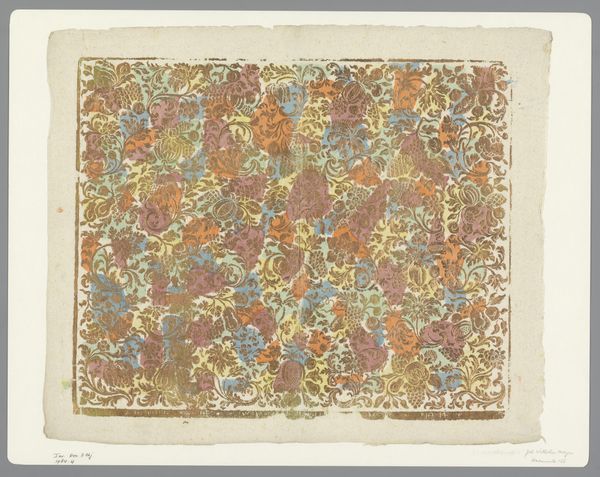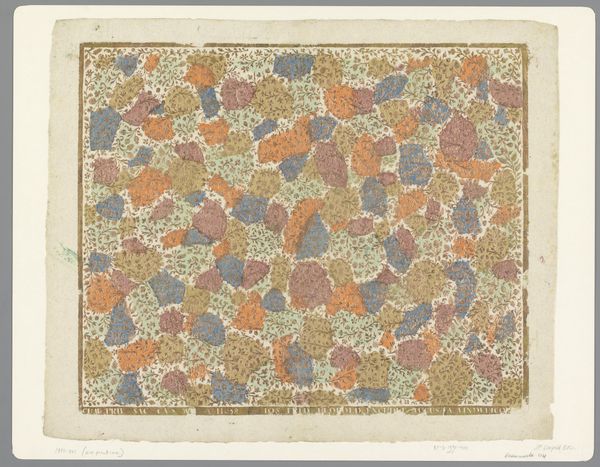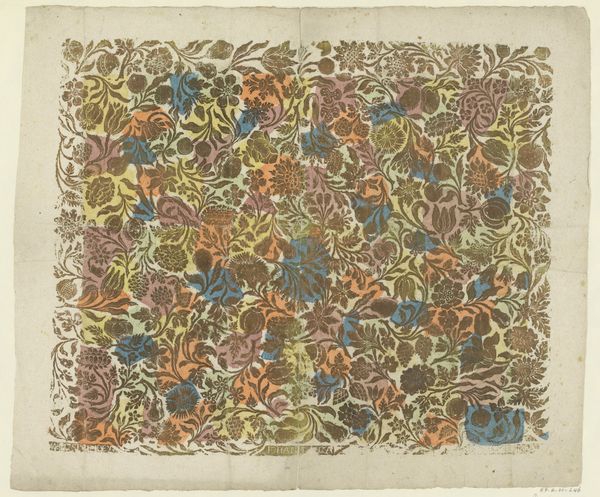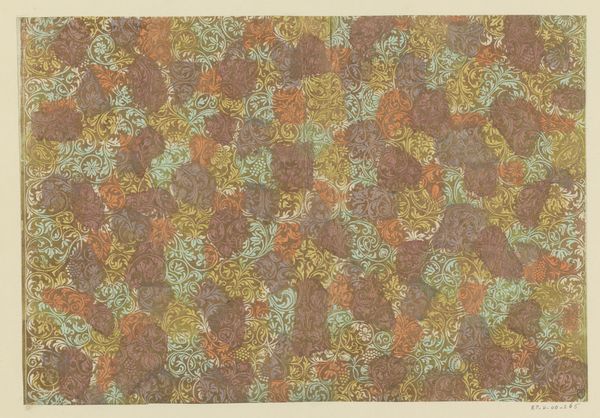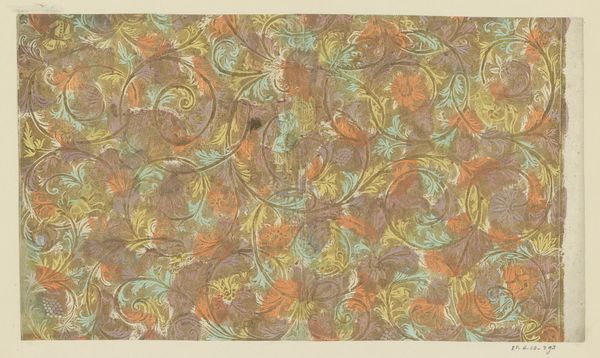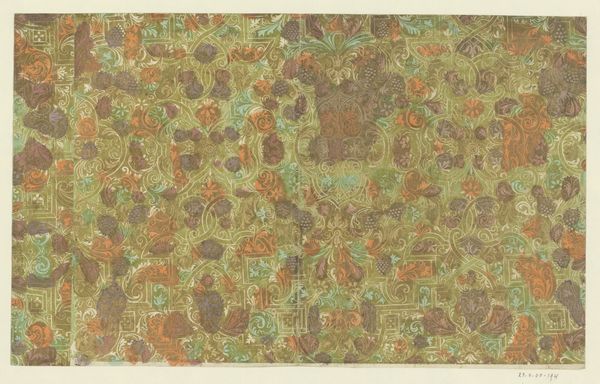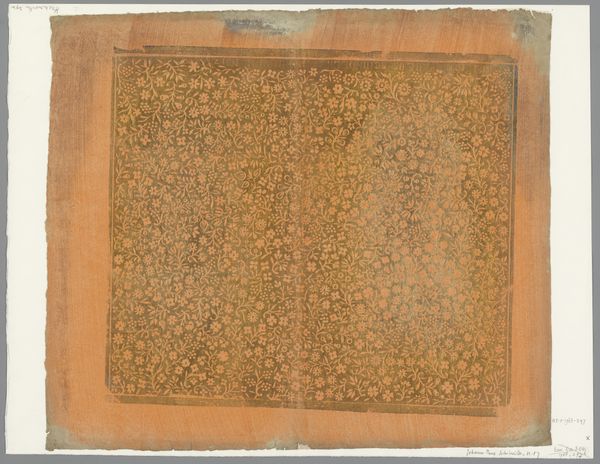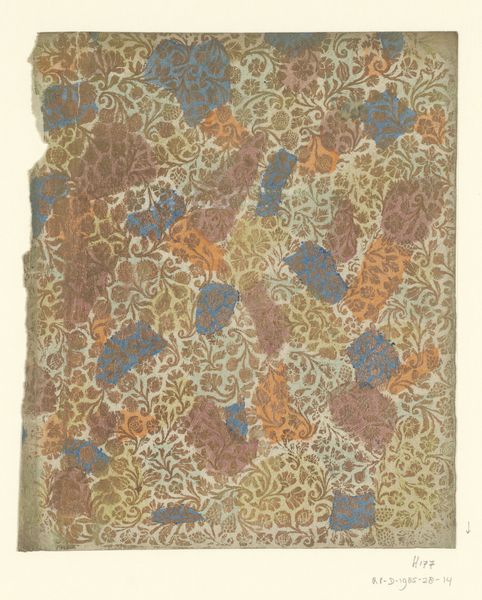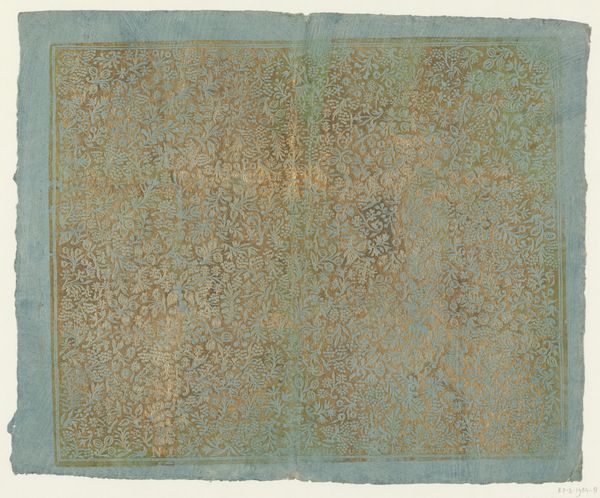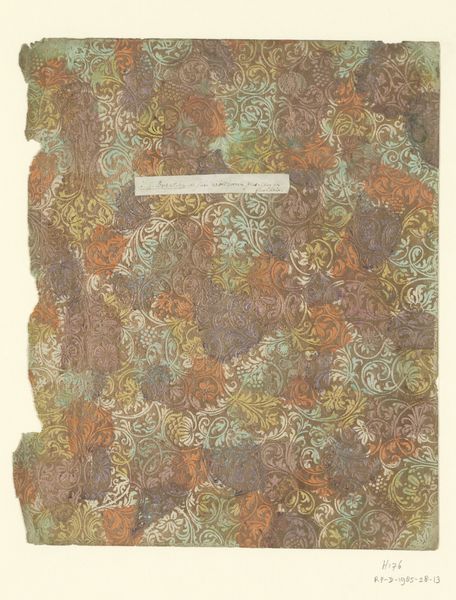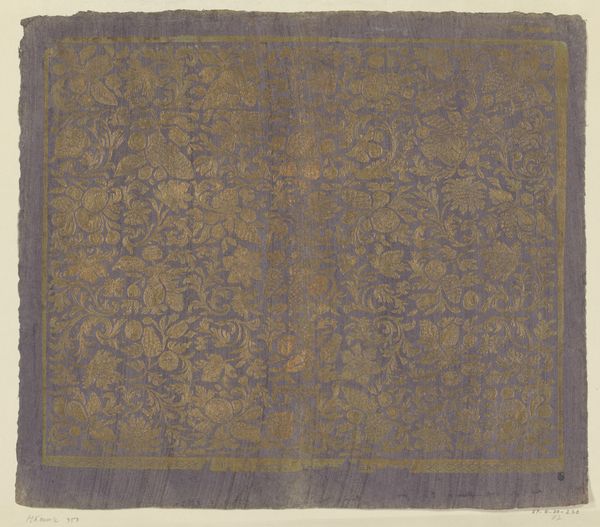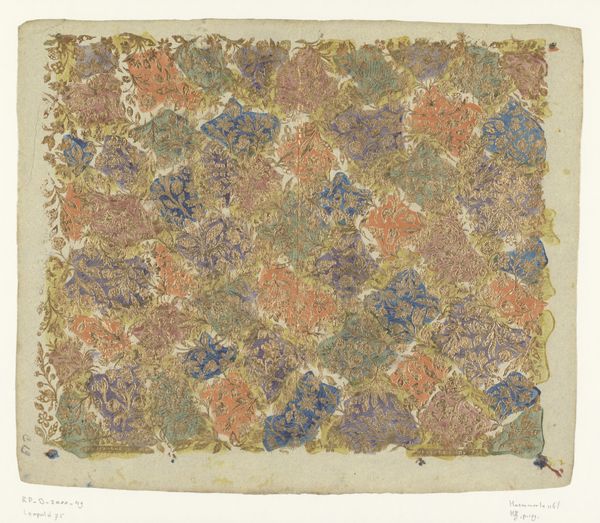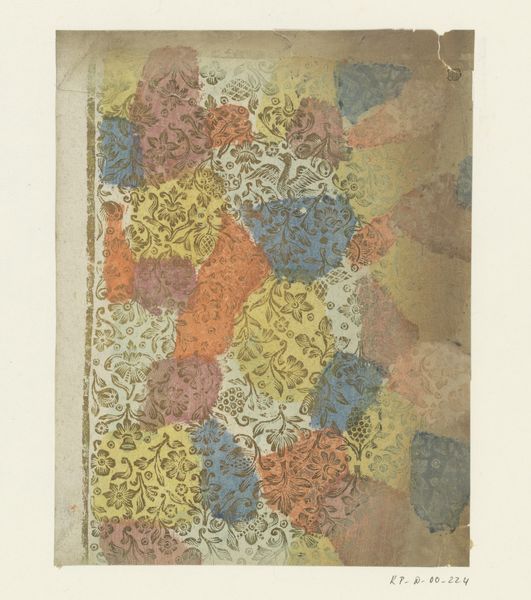
#
natural stone pattern
#
naturalistic pattern
#
pattern background
#
organic pattern
#
repetition of pattern
#
vertical pattern
#
pattern repetition
#
textile design
#
imprinted textile
#
layered pattern
Dimensions: height 308 mm, width 383 mm
Copyright: Rijks Museum: Open Domain
Editor: Here we have "Blad met bloemen en ranken met vruchten," a floral design by Johann Wilhelm Meyer, dating roughly from 1740 to 1780. It gives me an immediate sense of historical textiles, perhaps something for upholstery. What stands out to you as you look at it? Curator: Considering its historical context, this piece intrigues me as an artifact of its time, rather than merely an aesthetic object. It invites questions about production – was this a unique design or part of a larger workshop's pattern book? And what social class would have commissioned or used such a textile? Editor: That's fascinating. I hadn't thought about its economic implications. How might we find clues to those answers within the design itself? Curator: The density and intricacy of the pattern suggest a level of skilled labor, which, coupled with the presumably imported pigments, would indicate a degree of luxury. Further, we might compare this design with surviving textiles in museum collections to gauge its originality and potential market appeal within the 18th-century decorative arts trade. Think about the relationship between production of imagery and wealth. What can art history learn from political history, and vice versa? Editor: So, seeing it in the context of trade and class elevates it from just a pretty design to a window into the economic and social landscape of its time. Curator: Exactly. Its beauty becomes secondary to its value as a historical document, reflecting power dynamics and material culture. Editor: That gives me a new perspective on appreciating design from the past! I always looked at design from an aesthetic point of view rather than socio-political context. Curator: Understanding the social and cultural life can enrich how we experience the beauty in these designs.
Comments
No comments
Be the first to comment and join the conversation on the ultimate creative platform.
